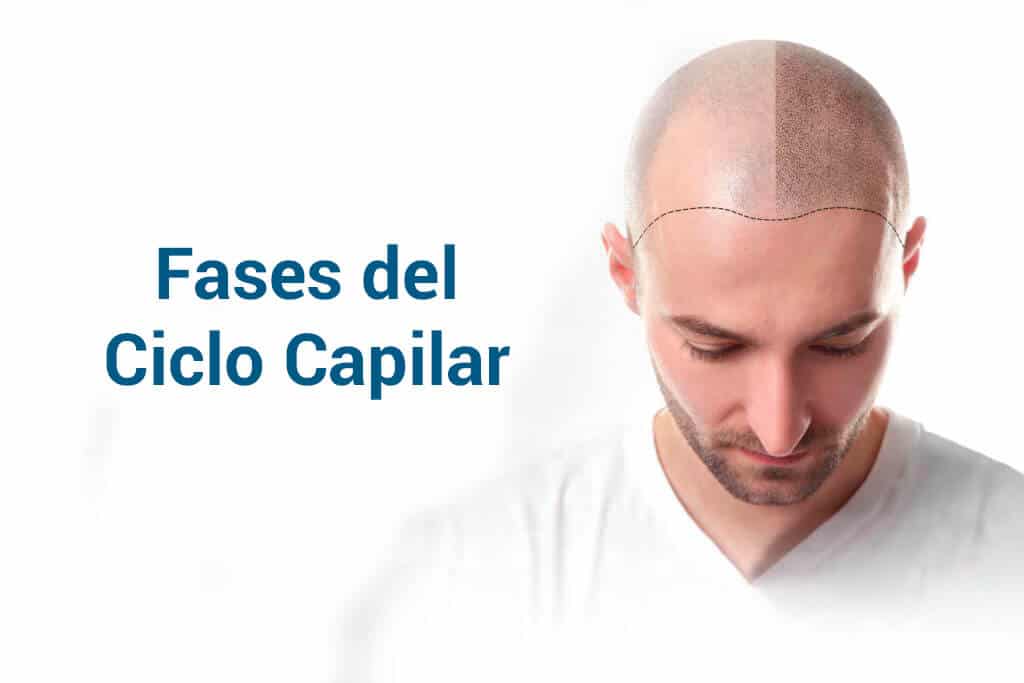PHASES OF THE HAIR CYCLE
Table of contents
Knowing the hair cycle is essential in determining whether or not a person is fit to undergo a hair grafting in Turkey. As we have already commented on other occasions in our blog, not everyone, no matter how much they want to, can do it (well, they can but the new hair can fall out after a few years). We tell you how hair development works so that you know what to consider when you go for a consultation.
Hair development cycle
Our hair is nothing more than the stem of a hair follicle and its growth depends on the area of the skin where it is located. In any case, it includes a papilla, a matrix and a bulb, in addition to the aforementioned stem (with its medulla for keratin, its cortex for pigment and its cuticle for storing dead cells).
Both its appearance and the life cycle of hair are similar to plants and their development process. So much so that during the last decades of the last century a toy based its amusement on growing grass to emulate the hair on a head.
This whole process that we will present below is based, in addition to a correct structure, on the supply of oxygen that the bloodstream is able to deliver.
Do you want to get your hair back? We have the perfect solution for you!
Growth (anagen phase)
The anagen phase is the first of the three stages we have seen that make up the hair cycle. It corresponds to the birth and growth of the hair.
Features
The moment, also known as the growth phase, includes the following characteristics:
- There is root cell activity, which arises from stem cells that mitosis relentlessly.
- This activity and the resulting hair growth will last between 1 and 7 years. In the case of beards, the maximum is 12 months. Eyebrows have an anagen period of 30 days and moustaches have an anagen period of 4 to 14 weeks. General body hair also grows for 13 to 15 weeks.
- This large difference corresponds to the existence and confluence of many factors, both internal and external.
- Growth takes place with the root immediately attached to the papilla of the hair bulb.
- We will see that the hair will become lacier at a rate of about one centimetre per month.
- At this point, our follicle is onion-shaped, with a wide base and a narrow stem.
- A normal hair, without alterations or affections, will have 85% of its hair in this growth phase.
Transition (catagen phase)
The catagen phase is when the hair is in a transitional phase. This is when the hair has stopped growing and is resting before falling out.
Features
Aspects that characterise this transitional phase are as follows:
- A STOP is made in the growth of the hair follicle.
- Cellular activity continues even in the absence of growth.
- This follicle begins its migration, detaching and moving through the different layers of the skin to approach the scalp.
- The hair bulb changes shape to become more cylindrical.
- The hair remains in this state for at least 20 days, and this period can be doubled.
The telogen phase is the last of these stages through which our hair passes and corresponds to the moment of rest and subsequent shedding.
Features
This time, also called rest time, includes:
- A duration ranging from 2 to 3 months.
- The follicle rests after the two previous phases (anagen and catagen) have taken place.
- Cellular activity ceases and the hair does not receive information from our organism, making the follicle a barrier between the two parts.
- Its bulb becomes keratinised.
- The hair is already dead.
- Each hair maintains its root within the hair follicle.
- This anchoring ends in the step known as exogenous.
- This is followed by hair loss as such, in which the hair shaft is displaced from the follicle; this is known as teloptosis. Here, the follicle will remain empty.
- Some people consider these two previous points to be a fourth phase of the cycle, differentiating it from the telogen phase, although, due to their characteristics, we consider them to be part of this stage of rest.
- Generally, if there is no hair loss problem, each person has about 14% of hair loss at this stage.
- About 100 hairs fall out every day; this is normal and should not be a cause for concern.
These phases are repeated for the same hair, under normal conditions, between 20 and 25 times. After that, when the hair falls out for the last time, it does not return to the anagen phase and, therefore, its hole is left in our scalp.
There are many reasons for hair lossBoth temporarily (the cycles will continue to count when the problem passes) and chronically. If you suffer from a temporary pathology, try to remedy it as soon as possible, if the problem has no solution, have a hair study done to check that you have optimal donor hair and get a hair transplant. hair grafting to solve baldness.
